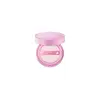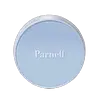What's inside
What's inside
 Key Ingredients
Key Ingredients

 Benefits
Benefits

 Concerns
Concerns

 Ingredients Side-by-side
Ingredients Side-by-side

Water
Skin ConditioningTitanium Dioxide
Cosmetic ColorantCyclopentasiloxane
EmollientLauryl PEG-9 Polydimethylsiloxyethyl Dimethicone
Skin ConditioningEthylhexyl Methoxycinnamate
UV AbsorberZinc Oxide
Cosmetic ColorantButylene Glycol
Humectant4-Methylbenzylidene Camphor
UV AbsorberPropanediol
SolventDicaprylyl Carbonate
EmollientCetyl PEG/PPG-10/1 Dimethicone
EmulsifyingC12-15 Alkyl Benzoate
AntimicrobialPhenyl Trimethicone
Skin ConditioningNiacinamide
SmoothingIsoamyl P-Methoxycinnamate
UV AbsorberGlycerin
HumectantSilica
AbrasiveIsotridecyl Isononanoate
EmollientCI 77492
Cosmetic ColorantTrimethylsiloxysilicate
EmollientCyclohexasiloxane
Emollient1,2-Hexanediol
Skin ConditioningDipropylene Glycol
HumectantSorbitan Sesquioleate
EmulsifyingTriethoxycaprylylsilane
Sodium Chloride
MaskingDisteardimonium Hectorite
StabilisingPanthenol
Skin ConditioningCI 77491
Cosmetic ColorantPropylene Carbonate
SolventEthylhexylglycerin
Skin ConditioningAluminum Hydroxide
EmollientMethicone
EmollientCI 77499
Cosmetic ColorantPolyglyceryl-6 Polyhydroxystearate
EmulsifyingAdenosine
Skin ConditioningPolyglyceryl-6 Polyricinoleate
EmulsifyingPolyglycerin-6
HumectantHibiscus Syriacus Flower Extract
AntioxidantOenothera Biennis Flower Extract
AstringentTocopherol
AntioxidantRosa Damascena Flower Water
MaskingSodium Hyaluronate
HumectantPentaerythrityl Tetra-Di-T-Butyl Hydroxyhydrocinnamate
AntioxidantPotassium Hyaluronate
Skin ConditioningHyaluronic Acid
HumectantHydrolyzed Hyaluronic Acid
HumectantHydrolyzed Sodium Hyaluronate
Skin ConditioningHydroxypropyltrimonium Hyaluronate
Sodium Hyaluronate Crosspolymer
HumectantAscorbyl Palmitate
AntioxidantSodium Acetylated Hyaluronate
HumectantWater, Titanium Dioxide, Cyclopentasiloxane, Lauryl PEG-9 Polydimethylsiloxyethyl Dimethicone, Ethylhexyl Methoxycinnamate, Zinc Oxide, Butylene Glycol, 4-Methylbenzylidene Camphor, Propanediol, Dicaprylyl Carbonate, Cetyl PEG/PPG-10/1 Dimethicone, C12-15 Alkyl Benzoate, Phenyl Trimethicone, Niacinamide, Isoamyl P-Methoxycinnamate, Glycerin, Silica, Isotridecyl Isononanoate, CI 77492, Trimethylsiloxysilicate, Cyclohexasiloxane, 1,2-Hexanediol, Dipropylene Glycol, Sorbitan Sesquioleate, Triethoxycaprylylsilane, Sodium Chloride, Disteardimonium Hectorite, Panthenol, CI 77491, Propylene Carbonate, Ethylhexylglycerin, Aluminum Hydroxide, Methicone, CI 77499, Polyglyceryl-6 Polyhydroxystearate, Adenosine, Polyglyceryl-6 Polyricinoleate, Polyglycerin-6, Hibiscus Syriacus Flower Extract, Oenothera Biennis Flower Extract, Tocopherol, Rosa Damascena Flower Water, Sodium Hyaluronate, Pentaerythrityl Tetra-Di-T-Butyl Hydroxyhydrocinnamate, Potassium Hyaluronate, Hyaluronic Acid, Hydrolyzed Hyaluronic Acid, Hydrolyzed Sodium Hyaluronate, Hydroxypropyltrimonium Hyaluronate, Sodium Hyaluronate Crosspolymer, Ascorbyl Palmitate, Sodium Acetylated Hyaluronate
Water
Skin Conditioning1,2-Hexanediol
Skin ConditioningButylene Glycol
HumectantXanthan Gum
EmulsifyingDisodium EDTA
Silica
AbrasiveAluminum Starch Octenylsuccinate
AbsorbentDimethicone
EmollientBentonite
AbsorbentEthylhexylglycerin
Skin ConditioningHydrolyzed Collagen
EmollientBifida Ferment Lysate
Skin ConditioningLactobacillus Ferment
Skin ConditioningPseudoalteromonas Ferment Extract
HumectantSodium Hyaluronate
HumectantTocopherol
AntioxidantHydrolyzed Elastin
EmollientWater, 1,2-Hexanediol, Butylene Glycol, Xanthan Gum, Disodium EDTA, Silica, Aluminum Starch Octenylsuccinate, Dimethicone, Bentonite, Ethylhexylglycerin, Hydrolyzed Collagen, Bifida Ferment Lysate, Lactobacillus Ferment, Pseudoalteromonas Ferment Extract, Sodium Hyaluronate, Tocopherol, Hydrolyzed Elastin
Ingredients Explained
These ingredients are found in both products.
Ingredients higher up in an ingredient list are typically present in a larger amount.
1,2-Hexanediol is a synthetic liquid and another multi-functional powerhouse.
It is a:
- Humectant, drawing moisture into the skin
- Emollient, helping to soften skin
- Solvent, dispersing and stabilizing formulas
- Preservative booster, enhancing the antimicrobial activity of other preservatives
Butylene Glycol (or BG) is used within cosmetic products for a few different reasons:
Overall, Butylene Glycol is a safe and well-rounded ingredient that works well with other ingredients.
Though this ingredient works well with most skin types, some people with sensitive skin may experience a reaction such as allergic rashes, closed comedones, or itchiness.
Learn more about Butylene GlycolEthylhexylglycerin (we can't pronounce this either) is commonly used as a preservative and skin softener. It is derived from glyceryl.
You might see Ethylhexylglycerin often paired with other preservatives such as phenoxyethanol. Ethylhexylglycerin has been found to increase the effectiveness of these other preservatives.
Silica, also known as silicon dioxide, is a naturally occurring mineral. It is used as a fine, spherical, and porous powder in cosmetics.
Though it has exfoliant properties, the function of silica varies depending on the product.
The unique structure of silica enhances the spreadability and adds smoothness, making it a great texture enhancer.
It is also used as an active carrier, emulsifier, and mattifier due to its ability to absorb excess oil.
In some products, tiny microneedles called spicules are made from silica or hydrolyzed sponge. When you rub them in, they lightly polish away dead skin layers and enhance the penetration of active ingredients.
Learn more about SilicaSodium Hyaluronate is hyaluronic acid's salt form. It is commonly derived from the sodium salt of hyaluronic acid.
Like hyaluronic acid, it is great at holding water and acts as a humectant. This makes it a great skin hydrating ingredient.
Sodium Hyaluronate is naturally occurring in our bodies and is mostly found in eye fluid and joints.
These are some other common types of Hyaluronic Acid:
Learn more about Sodium HyaluronateTocopherol (also known as Vitamin E) is a common antioxidant used to help protect the skin from free-radicals and strengthen the skin barrier. It's also fat soluble - this means our skin is great at absorbing it.
Vitamin E also helps keep your natural skin lipids healthy. Your lipid skin barrier naturally consists of lipids, ceramides, and fatty acids. Vitamin E offers extra protection for your skin’s lipid barrier, keeping your skin healthy and nourished.
Another benefit is a bit of UV protection. Vitamin E helps reduce the damage caused by UVB rays. (It should not replace your sunscreen). Combining it with Vitamin C can decrease sunburned cells and hyperpigmentation after UV exposure.
You might have noticed Vitamin E + C often paired together. This is because it is great at stabilizing Vitamin C. Using the two together helps increase the effectiveness of both ingredients.
There are often claims that Vitamin E can reduce/prevent scarring, but these claims haven't been confirmed by scientific research.
Learn more about TocopherolWater. It's the most common cosmetic ingredient of all. You'll usually see it at the top of ingredient lists, meaning that it makes up the largest part of the product.
So why is it so popular? Water most often acts as a solvent - this means that it helps dissolve other ingredients into the formulation.
You'll also recognize water as that liquid we all need to stay alive. If you see this, drink a glass of water. Stay hydrated!
Learn more about Water